Racism

We don’t know what prompted Rev. Franklin Graham to log onto Facebook and pound out the words that lit a firestorm last week. But within one day, tens of thousands of his faithful followers liked and shared his short, patronizing post that called “Blacks, Whites, Latinos, and everybody else” to “Listen up” and tune in to his take on why so many black people have died at the hands of police officers recently. According to Graham, the problem is “simple.” It can be reduced to their lack of obedience and bad parenting.
By Monday morning, more than 80,000 people shared the post and almost 200,000 liked it. Sojourners’ Jim Wallis penned a strong response.
On Friday an evangelical pastor based in Oakland, Calif. (the birthplace of the Black Lives Matter movement), Dominique Gilliard, shared the post with a small diverse group of evangelical leaders who decided to craft a collective response. This open letter was crafted by the collective efforts of Rev. Leroy Barber (CCDA and Word Made Flesh), Gilliard (New Hope Oakland), Dr. Brian Bantum (Seattle Pacific University), Micky ScottBey Jones (Transform Network), Efrem Smith (World Impact) and me (Sojourners). We didn’t know if our words would resonate. We only knew the truth that we must speak in response to Graham’s outsized influence coupled with apparent ignorance. In the end, a broad representation of national evangelical leaders agreed to sign this letter to Graham as principal signatories.
We invite you to read it, discuss it in your churches, and add your name to the many who say “No more!” We will not tolerate this type of flippant, patronizing commentary from faith leaders on critical issues that mean life and death for many in the body of Christ and in communities across America. We won’t tolerate it, even one more day. Rather, we invite all with open hearts to enter into dialogue — and to join us in the ministry of the gospel — the ministry of reconciliation.
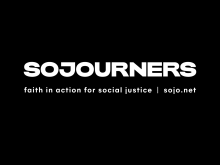

The Edmund Pettus Bridge was named after a Confederate general who became a Grand Dragon in the Ku Klux Klan. His name, still emblazoned over the top of that now famous bridge, was a powerful and threatening symbol of white power and supremacy in Selma, Ala. The Student Non-Violent Coordinating Committee (SNCC) had at one time removed Selma from their list of places to organize because “the white folks were too mean, and black folks were too afraid."
But that didn’t deter a group of courageous African Americans from marching across that bridge a half-century ago, risking their lives for the right to vote in America. They were attacked and beaten by the fierce forces, led by notorious Sheriff Jim Clark, for their resistance to the frightening violence of white power.
Last Saturday, during the 50th anniversary event of “Bloody Sunday,” I spent many hours just looking at that bridge. The words that kept coming to me were “courage” and “resistance.” My question became: what bridge we will now have to cross?
Congressman John Lewis, whose skull was cracked that day as a young man, opened the main event.
"On that day, 600 people marched into history … We were beaten, tear gassed, some of us [were] left bloody right here on this bridge. … But we never became bitter or hostile. We kept believing that the truth we stood for would have the final say.”
Then Lewis introduced the president, "If someone had told me, when we were crossing this bridge, that one day I would be back here introducing the first African-American president, I would have said you're crazy.”
What happened on this bridge, President Barack Obama said, “was a contest to determine the meaning of America,” and where “the idea of a just America, a fair America, an inclusive America, a generous America … ultimately triumphed.”
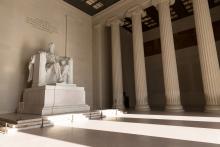
Last week’s last minute funding for the Department of Homeland Security has reminded us of how desperately America needs a long-term solution in the area of immigration. The current approach has failed to control the border, has resulted in de facto amnesty for 11-12 million people (the rough equivalent to the population of Ohio), and isn’t meeting our needs in the area of economic development and national security.
A necessary first step is acknowledging that the deportation of 12 million residents would be logistically impossible, as well as morally reprehensible and economically disastrous. The vast majority of these residents have proven themselves to be valuable members of our communities. We can debate the morality of mass deportation, but its logistical impossibility is grounds for moving on to a serious discussion about how to fix the system we have inherited
A little known fact of Lincoln’s legacy is that he explored the option of deporting slaves until he concluded that mass deportation could not solve the problem of slavery. In the weeks preceding the emancipation proclamation, Lincoln was actively pursuing an effort to deport the African-American slaves to Haiti, Honduras, and other counties in Central and South America. Congress actually appropriated $600,000 to assist Lincoln in deporting slaves to these destinations. Lincoln abandoned these plans only when other countries refused to cooperate. He abandoned them out of logistical, not moral necessity. He concluded that it simply could not be done. Then he moved on to legislation that earned him his reputation as the “great emancipator.”
I WAS ONCE told that “racism is our nation’s original sin.” This statement jolted me. While I didn’t dispute its truth, I have come to realize racism is much more complex than this.
In order to dismantle the structural sin of racism, we have to first set it within a larger context that acknowledges racism’s sociopolitical dependency and structural interconnectedness.
First: “race” is not real. It is not a scientific category; biologically, it does not exist. Race is a social construct, something built systematically. It has no inherent value or true significance beyond what we give it. In order for race to have real social consequences—which it undoubtedly does—there must be other phenomena at work that validate, sustain, and reinforce the social significance of race.
As a result of sin in our fallen world, human bodies are appraised and given a value based upon certain criteria. As a result of sin, men are privileged over women, white skin is privileged over darker skin, able bodies are privileged over disabled bodies. Historically, certain bodies are acclaimed while others are defamed. Race plays a starring role in this larger drama of embodiment.
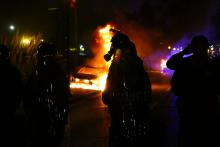
“Some of those protestors were right,” said Attorney General Eric Holder, as he released the Justice Department’s report on the police department in Ferguson, Mo. The report should be read by anyone who believes in racial justice and reconciliation, because it shows us what we are still up against in 2015, 50 years after the Selma march. This is not a post-racial America, especially in regard to our policing and criminal justice systems. Ferguson has become a teaching parable for the nation.
After a detailed and thorough investigation over many months, the devastating report revealed a police force and court system in Ferguson that proves true virtually everything young protestors and local residents have been saying since the shooting of Michael Brown last August.
The Ferguson Police Department replaced its mission of public protection with revenue generation by extracting money from the black residents of their town, using methods that the Justice Department said “may be unlawful.” The report painfully and painstakingly reveals unconstitutional and consistently abusive policing aimed at balancing the city budget on the backs of its poorest and black citizens. The Ferguson police went beyond even racial profiling to direct racist exploitation for a profit, with police apparently more concerned about “ fill[ing] the revenue pipeline” than protecting public safety. The use of traffic stops, citations, court appearances, fines, and even arrests that were specifically targeted at black residents revealed a profound contempt for black people with racial slurs and abuse a daily occurrence. Disgusting racist jokes, even aimed at the president and the first lady, circulated in e-mails from police supervisors and court officials. One joked about a black mother getting a crime prevention award for having an abortion.
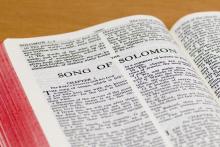
I am black, but [AND] comely, O ye daughters of Jerusalem, as the tents of Kedar, as the curtains of Solomon. Look not upon me, because I am black, because the sun hath looked upon me: my mother's children were angry with me; they made me the keeper of the vineyards; but mine own vineyard have I not kept. Song of Songs 1: 5-6
As the Executive Director for Faith in New York, an affiliate of the PICO National Network, I organize faith communities to take action for justice concerning issues that threaten the health of our communities. One of our campaigns is Live Free New York, which is a part of a national movement in which people of faith are working to end mass incarceration, gun violence, and police brutality through policy change and direct action.
Mass incarceration is an issue with many tentacles, and in New York, one tentacle is school suspension rates that are through the roof for black children. What many in the black community don’t understand is that according to data from the Office for Civil Rights at the U.S. Department of Education, as presented in a recent New York Times article: “black girls in public elementary and secondary schools nationwide are suspended at a rate of 12 percent compared with a rate of just 2 percent for white girls and more than girls of any race or ethnicity. … An analysis by Villanova [University] researchers of data from the National Longitudinal Surveys of Youth and the National Longitudinal Study of Adolescent Health indicated that black girls with the darkest skin tones were three times more likely to be suspended than black girls with the lightest skin.”


“Sean Penn’s ‘Green Card’ comment may have ruined the entire Oscars.”
That was the headline from the Huffington Post. I didn’t watch the Oscars, but I’m always curious about pop-culture scandals. What could Sean Penn have said that was so egregious that it threatened to ruin “the entire Oscars?”
Penn delivered the award for Best Picture, which went to Birdman. After Penn opened the card, he took an awkward moment to gather his thoughts about how he would introduce the winner, whose director happened to be his long-time friend Alejandro Iñárritu.
That’s when Penn delivered the scandalous introduction, “And the Oscar goes to … Who gave this son of a bitch his green card? Birdman.”

As my kids have grown into teenagers, their behavior has changed. My daughter is less interested in hanging out with me and prefers sitting in her room glued to her computer. My son plays Nintendo war games. When current events are discussed in our home, we sometimes disagree vehemently. According to Homeland Security adviser Lisa Monaco, I should be on my guard because these might be signs that my kids are about to head off to join the Islamic State.
Sounds absurd, right? But that’s the message to Muslim communities as part of the administration’s initiative to “counter violent extremism.”
In September, the Justice Department announced it was launching the program and piloting it in Boston, Los Angeles and Minneapolis. The stated aim was to bring together community, religious leaders, and law enforcement to “develop comprehensive local strategies and share information on best practices” for countering violent extremism. Although the initiative doesn’t mention the word “Muslim,” those adherents are clearly the targets. The secretary of the Department of Homeland Security has promoted it to Muslim communities across the country. It has the support of the White House, which is hosting a summit on the topic this week.

When fans barred a black man from boarding a train as they chanted racist lyrics after the Chelsea vs. PSG match on Feb. 17, it was only the most recent in a long history of similarly egregious acts.
Professional soccer is no stranger to racism. While such acts of overt bias should anger us, they should not surprise us. Whether it's chanted slurs, especially dirty tackles, or thrown bananas, racist behaviors emerge from a racist culture.
Below are videos of six of the most infamous incidents of racism in professional soccer since 2011. It is important to remember that these acts are only the explicit tip of an implicit iceberg. These are only some of the examples captured on video.
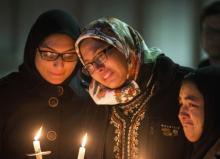
RALEIGH, N.C. — Deah Barakat took my class “Islam in the Modern World” at N.C. State University a few years ago. He was curious about Islamic history, contemporary spiritual and political movements, and was great in class discussions. I’ve taught thousands of students in the last 11 years here, but Deah stood out for his enthusiasm, kindness, calm demeanor and obvious charisma.
Deah Barakat, Yusor Abu-Salha, and Razan Abu-Salha were the very best people. They embodied the core Islamic principle of “ihsan” — doing that which is both beautiful in itself and beautifying to the world. They volunteered to assist poor and homeless people. They planned to travel to camps in Turkey to help Syrian refugees in need. They were creative, intelligent, kind, generous. There are no words for how much we have all lost when they were gunned down and murdered in their Chapel Hill condominium last week.
Yet many insist their murders resulted from a dispute over parking. While the particular motives of the shooter cannot be determined at this stage, it is abundantly clear that these deaths were not just about parking. It is also clear the emerging discussion is about the place of Muslims in contemporary America. As we analyze the meaning of Deah, Yusor, and Razan’s murders, we are also peeling back layers of societal debates about Islam, Muslim-Americans, and the culture of intolerance and violence taking root in the U.S. On some level, it does not matter whether the shooter actually intended to kill three Muslims because they were Muslim. The public conversation is revealing several collective concerns in stark and disturbing ways.
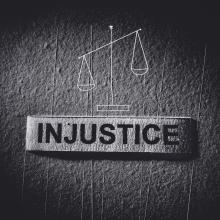
Black Future Month, a term coined by the new black vanguard, seeks to build upon the robust legacy of our foreparents while refusing to nostalgically rest upon their laurels. Black Future Month affirms our collective history of struggle, resilience, and achievement, while centering our present predicament in all its urgency. As this movement progresses, it’ll be imperative that we retain the spiritual foundation which anchored the freedom fighting of our ancestors,’ but this retention cannot come at the expense of passing the baton off to emerging leadership. We must go forward together, acknowledging that we need the collective wisdom of our people to navigate the troubled waters that surround us on all sides.
Black Future Month emerges from the #BlackLivesMater movement and the awareness that we’re in the midst of a watershed moment. There are currently “more African-American adults under correctional control, in prison or jail, on probation or parole, than were enslaved in 1850, a decade before the Civil War.” Black people currently constitute 12 percent of our nation’s populace, yet represent 40 percent of the nation’s incarcerated population. It’s estimated that 1 in every 3 black males will serve time in jail or prison in their lifetime and that 1 in 13 black people cannot vote due to felon disenfranchisement. As bleak as these realities are, mass incarceration is just a portion of the burden we’re bearing.

Revolutionary Love
Revolutionary love has given birth to new life.
We are gasping, breathing (I can’t breathe)
Screaming (We have nothing to lose but our chains)
We have been in the womb long enough
Blinking to the blinding light of the revolution
Our eyes adjusting
And we answer with what love looks like in public
Justice
I’ve been thinking about the life birthed out of revolutionary love. The night I met Waltrina, we stayed up until an ungodly hour — instant sister-friends. We bonded, talking about everything, about finding and losing faith — in God and humanity — then slowly picking it up again piece by piece, about being the diversity in mostly white professional spaces, about friends, family, and the struggle to find our places (as 30-somethings) in this “new” freedom movement.
Out of a deep revolutionary love inspired by Jesus and nourished from the well of our people, we have determined to get in where we fit in, living out the belief that there is a place for everyone in the movement.
Today's fight against the powers and principalities of systemic injustice cannot be left to the continued service of the elders that survived the 1960s civil rights movement, nor hoisted solely upon the shoulders of the teens and 20-somethings of today, just because they have energy and new ideas. Despite the focus on elders and youth, this is an intergenerational movement that requires all of us to answer the communal call. I am encouraged by one of my mentors, Mama Ruby (Sales) who says it is time to have all hands on deck.
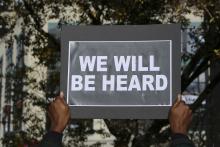
I cringed. Recently, I sat watching a cable news broadcast — can’t remember which one. What I do remember is it featured people doing good in the world … and it made me cringe.
Lots of people were highlighted, but the two young black people they featured both shared the same general narrative: So and so had a hard life. He came from poverty. She came from abuse or neglect. But they rose above. Now look at all they’ve accomplished. It was striking. None of the stories of white people started with this narrative. Rather, theirs usually went something like: Little Suzy or Johnny took a class project and turned it into a major non-profit that helps thousands of orphans … in Africa.
No matter where you tuned into this broadcast, blackness unconsciously was associated with hardship and overcoming while whiteness was associated with genius and compassion.
I sat there thinking: The truth is we have had centuries of hardship to press through. Our history is present, the good and the bad. As in Toni Morrison’s Beloved, the ghost of slavery haunts us. It affects our present. But it’s not just the past that haunts us. It is the same basic oppression of yesteryear —confinement, control, and disregard for black lives. So, it makes sense that the stories of our overcomers are as potent in current-day narratives as they are in history.
Jackie Robinson, Joe Lewis, Paul Robeson, Zora Neale Hurston, Billie Holiday, were the overcomers of our past. The black children in that broadcast were the overcomers of our present.
But what about the black future? One hundred years from now, will my family’s descendants still have to watch featured stories of black people doing good that always begins: So and so had a hard life?
During Black History Month we typically look back on all the accomplishments of those who paved the road for generations to come. But this month, we have been inspired by the #BlackLivesMatter movement to look forward to another kind of future for black men, women, and children.

On Feb. 8, civil rights attorneys sued the city of Ferguson, Mo ., over the practice of jailing people for failure to pay fines for traffic tickets and other minor, non-criminal offenses.
And to this I say: It’s about time.
Growing up with an attorney father — a “yellow dog Democrat” one at that — who often took on poor clients in return for yard work and other non-cash payments, I heard early and often about the unfair — and illegal — practice of debtors’ prison. A poor person could not be jailed for failure to pay a fine, my father told me. I trusted his words were true.
So imagine my surprise when at the age of 18, I was arrested for unpaid traffic fines.
At that time I was a stay-at-home mom, trapped in a too-early marriage I would one day leave. My son was probably 6 months old. When the knock came at my door and I saw a police officer standing outside, I didn’t hesitate to answer.
The officer confirmed my identity and told me I was under arrest for failure to pay traffic tickets I had received for driving an unregistered vehicle.
I know that I should have paid the registration. Once ticketed, I know I should have worked out a payment plan. I know I should have taken responsibility for my illegal actions.
But I was young, inexperienced with the system, and very, very poor. Too poor to keep up with even the most modest of payment plans.
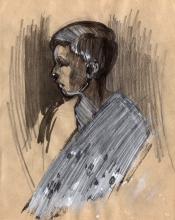
In my classroom, there is a little boy from Honduras. He speaks Spanish — that is the language of his heart — but he is learning English and tries with all his heart to learn new words and strange phrases that will allow him to live in his new world here. He is 9 years old, with dark hair cut straight across his forehead in a wonderfully crooked line. He has deep brown eyes the color of a plowed field, eyes that sparkle like starlight at night off a pool of calm water. He has big dimples that catch teardrops when he laughs until he cries, or when he cries until the sadness in his heart resides. He has a broad smile that is sometimes mischievous but most times full of joy.
Sometimes I wonder ... what is he thinking as he closes his eyes at the end of the day, or opens them at dawn?
"I hope my new world will embrace me," he thinks tenderly, "and not call me an illegal alien ... and not try to tear me apart from my Aunt ... and not try to tear me apart ... and not place me in the shadows ... and not make me a shadow.
Mami, can you hear me in the dawn? Will my words reach you over the land, over the land, to the valley, between the mountains, to La Esperanza, to Honduras? Help me, Mami. Please. I don't want to be a shadow here. ...

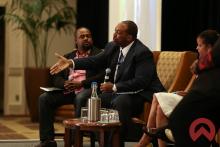

THE GRAINY, STUTTERING surveillance footage shows police milling about, offering no medical assistance to the 12-year-old boy, Tamir Rice, one of them has just shot. They only spring into action when the boy’s older sister runs into the frame toward her brother. An officer tackles the girl, knocking her back in the snow, then cuffs her and puts her in the patrol car, only a few feet from her dead or dying brother.
This extended footage, released in January, and bystander cell phone footage from a few minutes later with audio of the sister wailing over and over “they killed my brother,” brought into my head the Good Friday spiritual “Were You There?” It was another moment, in months of unrest over police killings of black adults and children, when the question pressed in on me as a white person. “Were you there? Were you there when they choked my father dead? Were you there when they shot my son? Were you there when they killed my brother? Were you there?”
While books and other cultural works are no substitute or shortcut to the spiritual work of true repentance and detoxifying from cheap grace, they can be means of deepening understanding and finding the resolve to take action. Along with the film Selma, following are some of the artistic resources I’m turning to this Lent.